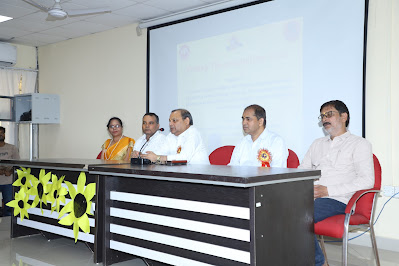Role of Media in pre Independence in India
Media, especially the Print Media, has all along been the backbone of all
mass movements or popular upsurge, and Indian independence struggle is no
exception. Right from the time of India's First War of Independence in 1857,
Hindi/Urdu journals like Payam-e-Azadi and Samachar Sudhavarshan supported the
struggle for freedom and exhorted people to throw out the British rulers. This
provoked the British to hit back with the notorious Vernacular Press Act,
popularly known as the Gagging Act, imposing many restrictions on the
newspapers and periodicals of the day. Similarly Amrita Bazaar Patrika faced
the Government's ire and was forced to close down in 1871, before moving to
Calcutta from Jessore to continue their fight against the ruling establishment.
In fact, many of the tallest leaders of the Freedom movement themselves
turned journalists too, and used the press to propagate their ideas to the
masses. The following list of publications run by some of the leaders would
illustrate the point:
>Rastiguftar run by Dadabhai Naoroji.
>Kesari and Mahratta both edited jointly by Bal Gangadhar Tilak. For
this Tilak Maharaj was tried and convicted for sedition, and exiled from the
country for six years.
>Hindustan run by Madan Mohan Malaviya.
>Punjabi,Bandemataram,The People - all by Lala Lajpat Rai.
>Young India,Navajeevan and Harijan - all edited and run by the
Mahatma himself to communicate his views
with his followers.
>In Kerala, Swadeshabhimani, Malayala Manorama, and Mathrubhumi were
started to propagate the message of the freedom movements. The owner of the
Swadeshabhimani was deported in 1910 for his anti-British stance, the
properties of Malayala Manorama were confiscated in 1938, and Damodara Menon,
the editor of Matrubhumi was arrested in 1942 for supporting the Quit India
movement.
>In the then Madras presidency, G.Subramania Aiyer, a prominent member
of the Indian National Congress started The Hindu in English in 1878, and
Swadesa Mitran ( Friend of Self Rule) in Tamil in 1881 to propagate the Nationalist
ideas. The iconic Tamil poet, Mahakavi Bharathiyar worked as sub-editor for
Swadesamitran for a number of years, fueling the struggle for independence with
his inspiring poems,informative columns and incisive cartoons. Bharathi later
on started his own publications, Indian in Tamil,and Bala Bharathi in English.
For his nationalistic activities, the British tried to imprison Bharathi, and
to evade arrest,he migrated to Pondicherry, then ruled by the French, and
continued his activities from there, where he also met and associated with Sri
Aurobindo.
So much for the role of the press/print media,and the challenges faced by
them from the colonial rulers. Now, let us briefly see the role of audio-visual
media, namely the Stage and the Movies.
In a scenario where most people are illiterates, even the press can hope
to achieve only partial success. So,it was left to the Theater initially and
the movies later to effectively carry the message to the masses. I will speak
here only about the Tamil stage/movies, as I know little about other
languages/regions.
In most of the stage plays, though they were either mythological or
folklore, the actors,who were also great singers used to intersperse the
dialogues with the messages of the leaders like Gandhi,or used to sing songs
inspiring nationalist sentiments. I heard from my father that it was not
unusual for Lord Karthikeya on stage to suddenly burst into a song
"Pandita Motilal Nehruvai pari koduthomey" lamenting the demise of
Motilal Nehru, or Sage Naradha break out full throatedly singing
"Gandhiyai pol oru santha swarupanai kanbadhu elidhamo" in praise of
the Mahatma and his non violence movement.





No comments:
Post a Comment
Please share your views